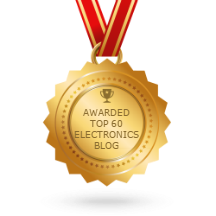Q. 1: What is induction?
A. 1: The process by which one conductor produces, or induces, a voltage in another conductor, even though there is no mechanical coupling between the two conductors.
Q. 2: What is inductance?
A. 2: The property of a coil in a circuit to oppose any change of existing current flow.
Q. 3: What is self-inductance?
A. 3: The inducing of an emf emf
Q. 4: What is mutual inductance?
A. 4: The linkage of flux between two coils or conductors, caused by the current flowing within one or both of the coils or conductors.
Q. 5: Name several methods by which an emf
A. 5: By conductors being cut by-
- A magnetic field (as in generators)
- Chemical reactions (as in batteries)
- Heat (as in thermocouples)
- Crystal vibration (as in
piezoelectricity - Friction (as in static electricity).
Q. 6: What is a transformer?
A. 6: A device that transforms electrical energy from one or more circuits to one or more other circuits at the same frequency but usually at a different voltage and current. It consists of a core of soft-iron laminations surrounded by coils of copper-insulated wire.
Q. 7: Draw a diagram of two coils, such as the coils of a transformer winding, and indicate the self-inductance and the mutual inductance.
A. 7: Self-inductance is produced within the primary coil, and mutual inductance exists between the two transformer coils, as shown bellow this Figure:
Q. 8: What always surrounds a conductor when a current flows through it?
A. 8: A magnetic field.
Q. 9: There are two basic types of transformers. What are they?
A. 9: The isolation type, in which the two windings are physically isolated and electrically insulated from each other, and the autotransformer type, in which there is only one coil with a tap or taps taken off it to secure other voltages (the primary is part of the secondary and the secondary is part of the primary).
Q. 10: What is an oil-immersed transformer?
A. 10: The core and coils are immersed in a high-grade mineral oil, which has high dielectric qualities.
Q. 11: What is Transformer Oil?
A. 11: Transformer oil or insulating oil is an oil that is stable at high temperatures and has excellent electrical insulating properties. It is used in oil-filled transformers, some types of high-voltage capacitors, fluorescent lamp ballasts, and some types of high-voltage switches and circuit breakers. Its functions are to insulate, suppress corona and arcing, and to serve as a coolant.
Transformer oil is most often based on mineral oil, but alternative formulations with better engineering and/or environmental properties are growing in popularity.
Q. 12: Why is oil used in a transformer?
A.12: To increase the dielectric strength of the insulation, to keep down the possibility of arcing between coils
Courtesy:
- Book of Paul Rosenberg
Wikipedia - Internet.
Download this Article as PDF:
![]()





















0 Comment(s):
Post a Comment